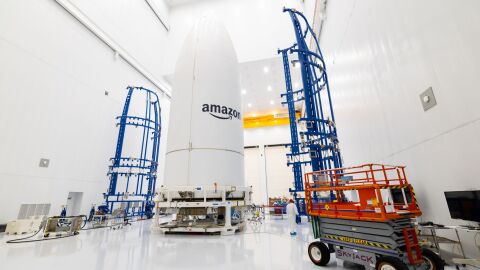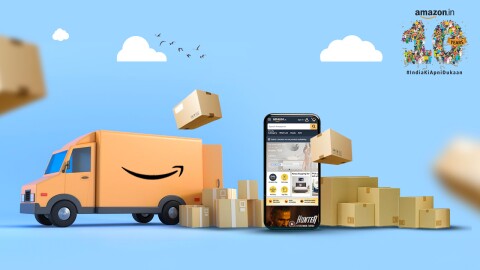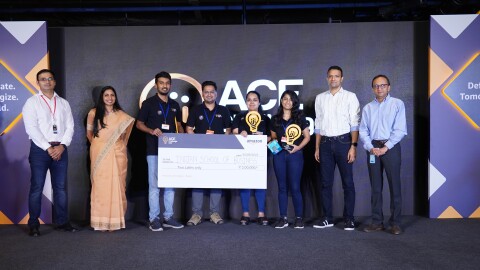Jeff Bezos had remarked in his 2018 shareholder letter that teams across Amazon are listening to customers and wandering on their behalf. Amazon’s journey in India reflects that reality at scale.
Instead of bringing a template that has worked for Amazon in other markets, the company chose to consciously understand the Indian customer, study their shopping habits, usher in innovations tailored for India, and empower local leaders who understood the nuances of the market.
“The mental model shift was important. It was a conscious call to deliver on the needs of the market through situational innovation and leadership rather than focusing on what our capabilities are as a company,” says Kishore Thota, Director - Shopping Experience, India and Emerging Markets, and an Amazonian for 16 years. Kishore was one of several leaders who began his Amazon journey at the company’s headquarters in Seattle before relocating to India in 2011.

Here are some customer-centric interventions that have propelled Amazon in its mission of building for India and serving customers at scale.
Reaching every serviceable pin code
Amazon had a humble launch in 2013 with just 100 sellers, 1 fulfilment centre in Mumbai, and a delivery network that could reach 1,600 pin codes. “Very early in our journey, we were clear that we wanted to build Amazon for every Indian, wherever the person may be. This meant we needed to deliver to every part of the country, something that was pretty audacious back then,” says Thota.
A mobile phone was the only computing device for most Indians, and so we needed to think mobile-first. Launching the mobile app changed everything.
When Amazon’s delivery capability scaled to 3,000 pin codes, a decision was taken to expand to all serviceable pin codes across the country. “We scaled from 3,000 to 100% serviceable pin codes in just two months. I’m super proud of what the operations team was able to pull off,” he adds. Cut to 2023, and Amazon gets orders from 100% of India’s serviceable pin codes each week.
An app-first strategy
Amazon was the first e-commerce company to launch a mobile app back in 2014. “It was the 3G era; 4G was still some years away," said Thota.
Mobile speeds were slow and device configurations were not as robust as they are today. It required ground up invention—from the size of the mobile application to the size of every page—and overhauling the experience to match the needs of the rapidly growing 'new to the internet' and 'new to e-commerce' customers. “We launched lite versions of the app, simplified and methodically lightened every single page, but more importantly, we changed our org-wide thinking to mobile-first thinking," said Thota. "At the same time, instead of completely shutting down other platforms, we put customers first and ensured the experience was great, irrespective of the platform they chose—mobile app, mobile web, or the desktop, which was expensive but more important to us,”
Assisted shopping with Amazon Easy
Tailored for people who had never shopped online, Amazon Easy was an innovation in assisted shopping. At the time, it helped bridge the digital divide and built trust among new Amazon customers in smaller towns. Curious customers walked into their neighbourhood Amazon Easy stores and the owners assisted shoppers in identifying and selecting a product they liked, created their Amazon accounts, and helped them with checkout. “This helped in breaking down complexities and dispelling online shopping myths. We set up a network of close to 1 lakh Amazon Easy stores across the country. Easy become an important program to get new customers onto Amazon and benefitted e-commerce at large,” says Thota.
Building local language capabilities
From Day 1, Amazon’s intent was to serve all customers in India and not be a niche player. An English-only shopping experience in a country with several languages and thousands of dialects was leaving out millions of customers, especially from tier 2, tier 3 cities and rural areas. First-time shoppers who weren't conversant in English preferred to shop in their native language. In 2018, Amazon.in introduced the Hindi shopping experience. Progressively six more regional languages—Tamil, Telugu, Kannada, Malayalam, Marathi, and Bengali—were added.
Alexa-powered voice shopping
Thota says that today voice-based communication takes precedence over keyboard-based communication (like typing and texting), especially for people in rural areas. “Even today, we know people who would rather ask for directions than use technology,” he says. In 2020, Amazon introduced voice shopping powered by Alexa. The team had to carefully understand various accents and pronunciations by Indian customers. Also, AI tools that make sense of different accents and customer preferences were deployed to enable a conversational interface. Today, millions of customers use the voice-enabled shopping feature on Amazon.in.
Camera-based search
Many people find it hard to describe exactly the products they want to buy. “What do you call a brown Punjabi jutti with a silver tassel on it, which is worn during weddings? There probably isn’t a specific name for it. Even if there is, there are many variations that are hard to capture in words, which makes it harder to shop for,” says Thota. To address this customer need, Amazon launched camera-based shopping, where customers could point the camera at an item, or upload a photo, and Amazon would find it.
We are now seeing rapid growth in usage of camera search to discover products, and are making large investments in machine learning to capture and understand customer intent. We then match it with our vast and ever-growing product catalogue.
Enhancing customer experience through AI/ML
Every gap in providing a superior shopping experience provides us with an opportunity to innovate and solve complex problems at scale through technology. “Our investments in Artificial Intelligence and Machine Learning are not only simplifying the customer journey and lowering the barrier for online shopping, but are also accelerating the growth of our sellers. We do this by simplifying the selling experience, enhancing the discoverability of their products, helping them manage inventory, and saving them costs. This also brings efficiency in our operations by reducing costs, wastage, and more. Through technology innovation, we want to be the digital catalyst that meaningfully impacts everyday lives and livelihoods.”












